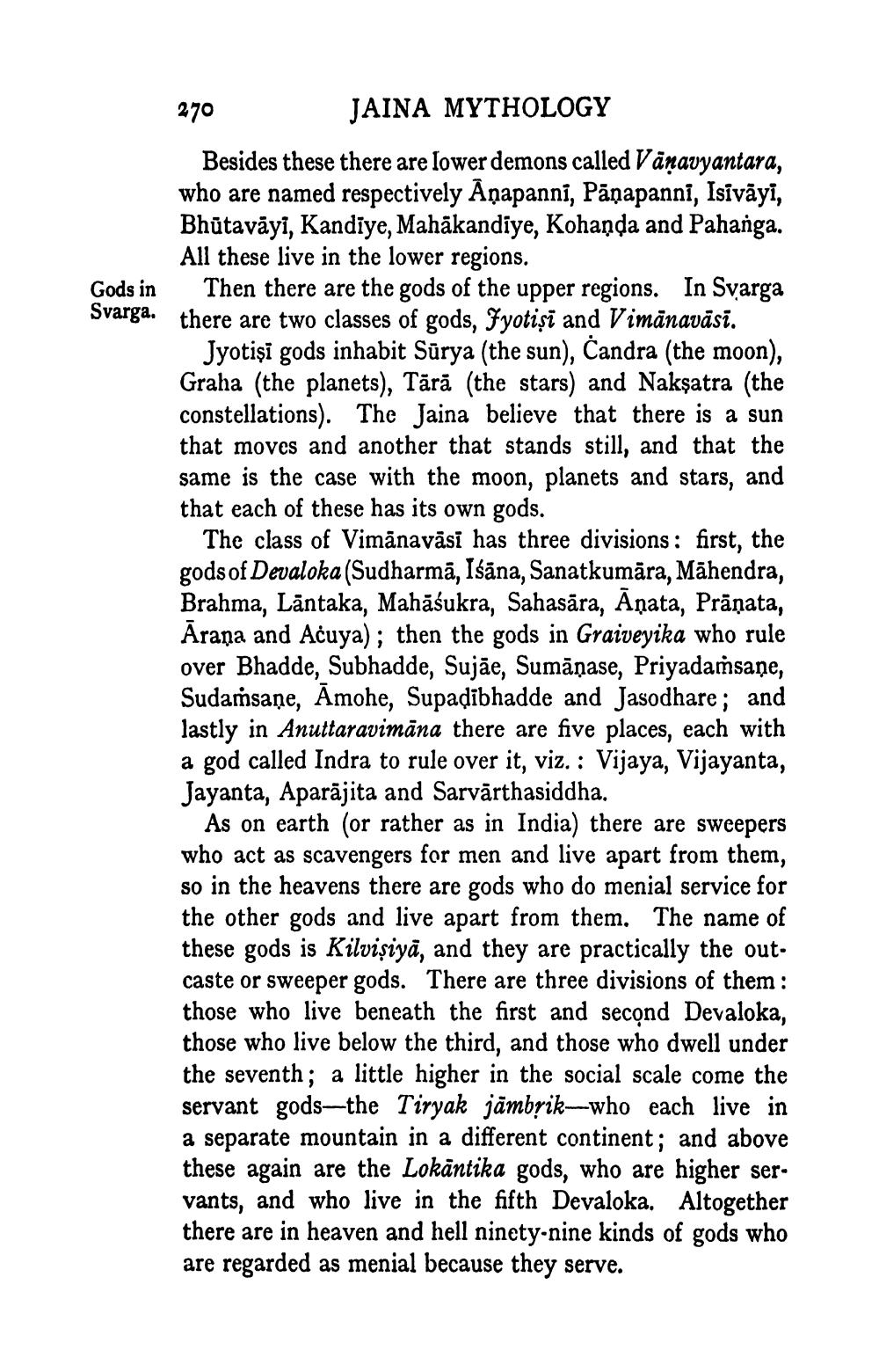________________
JAINA MYTHOLOGY
Besides these there are lower demons called Vänavyantara, who are named respectively Anapanni, Pāṇapanni, Isīvāyi, Bhutavayi, Kandiye, Mahākandiye, Kohanda and Pahanga. All these live in the lower regions.
270
Gods in
Then there are the gods of the upper regions. In Svarga Svarga. there are two classes of gods, Fyotişi and Vimānavāsī.
Jyotişi gods inhabit Sūrya (the sun), Ċandra (the moon), Graha (the planets), Tārā (the stars) and Nakşatra (the constellations). The Jaina believe that there is a sun that moves and another that stands still, and that the same is the case with the moon, planets and stars, and that each of these has its own gods.
The class of Vimānavāsī has three divisions: first, the gods of Devaloka (Sudharmā, Iśāna, Sanatkumāra, Mähendra, Brahma, Lāntaka, Mahāśukra, Sahasāra, Āṇata, Prāṇata, Ārana and Acuya); then the gods in Graiveyika who rule over Bhadde, Subhadde, Sujāe, Sumāņase, Priyadaṁsaņe, Sudaṁsane, Āmohe, Supaḍībhadde and Jasodhare; and lastly in Anuttaravimāna there are five places, each with a god called Indra to rule over it, viz.: Vijaya, Vijayanta, Jayanta, Aparajita and Sarvārthasiddha.
As on earth (or rather as in India) there are sweepers who act as scavengers for men and live apart from them, so in the heavens there are gods who do menial service for the other gods and live apart from them. The name of these gods is Kilvişiyā, and they are practically the outcaste or sweeper gods. There are three divisions of them: those who live beneath the first and second Devaloka, those who live below the third, and those who dwell under the seventh; a little higher in the social scale come the servant gods-the Tiryak jambṛik-who each live in a separate mountain in a different continent; and above these again are the Lokantika gods, who are higher servants, and who live in the fifth Devaloka. Altogether there are in heaven and hell ninety-nine kinds of gods who are regarded as menial because they serve.




